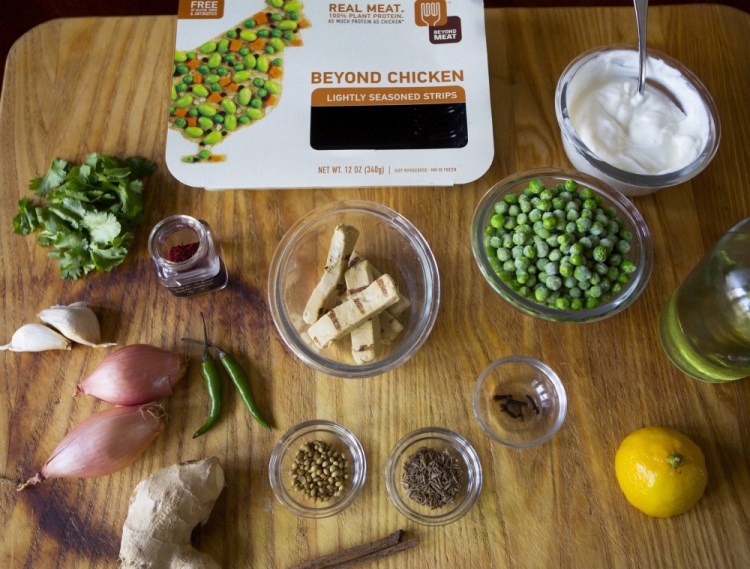There are two ways to think about meat, says Beyond Meat’s founder, Ethan Brown, in the company’s marketing video. One way is to understand that it comes from cows, pigs and chickens. The other is to think about meat in terms of its component parts: amino acids, carbohydrates, lipids, trace minerals and water. All of which are found in peas, Brown adds.
Beyond Meat, a company based in Manhattan Beach, California, that has financial backing from the same technology venture capitalists who initially funded Amazon, Google and Twitter, takes compounds extracted from green peas (and some soy for its chicken products) and puts them back together (with beef or chicken flavoring, rice flour, canola oil, tomato powder or carrot fiber and coloring agents) in secretly formulated, near-perfect replicas (or so it claims) of beef and chicken. Frankenfood at its finest? Or a feasible way to feed the 9.6 billion earthlings expected by 2050?
I don’t want to tread on vegetarian columnist Avery Yale Kamila‘s turf by saying how plant-based proteins – either these newfangled ones or the longstanding soy-based meat substitutes – measure up in terms of taste and healthfulness. She covers those topics in spades.
What I do want, though, is more quantification concerning the amount of time, energy and natural resources it takes to turn plants into meat. Beyond Meat says it uses a small fraction of the energy, crops and water it takes to make real, conventionally raised meat; it makes no specific claims about grass-fed beef or pastured chickens. But what exactly is a fraction? I’d like is a side-by-side sustainability comparison of my meaty options.
The common denominator I am looking for, at least in part, comes from figuring out the “environmental efficiency” for producing any protein, whether it comes from animals, plants or insects (crickets are an up-and-coming protein source for human consumption).
In a 2015 journal article in Public Health Nutrition, professors from California State Polytechnic and Loma Linda University said their data mining of more than 50 sources showed that producing 1 kilogram of protein from kidney beans in California (I could find no study making a similar comparison for peas and repeated requests for them from Beyond Meat went unanswered) required approximately 18 times less land, 12 times less fertilizer, 10 times less water and pesticides, and nine time less fuel than it takes to render 1 kilogram of conventionally raised beef. The researchers say it takes more than twice as much land, fuel, and fertilizer; 75 percent more pesticides; and 25 percent more water to produce conventionally raised chicken protein than it does to produce the same weight in kidney bean protein.
The difference in these numbers basically reflects the fact that you eat the beans and not the protein of the animal that ate the beans and created a bunch of manure in the process.
That, to me, is a fair comparison if I am willing to eat the legumes in and of themselves. But what I have not been able to find out is the environmental footprint of the process of taking peas, pulling out their parts, drying them out as powders and putting them back into moist meat “platforms,” as Brown describes them in those videos I mentioned. Shouldn’t the fuel and water pumped into that process be part of the equation?
Ben Slayton, owner of Farmers’ Gate Market, with retail outlets in both Wales and South Portland, understands that science must be involved in feeding the world’s exploding population. And he is flattered that scientists are going to such lengths to mimic the taste and texture of the local and sustainably raised meat he sources and butchers with only sharp knives and six man hours per side of beef. “That seems like an awful lot of processing to turn peas into meat. Why not just eat the peas? I love peas!” Slayton said.
Christine Burns Rudalevige is a food writer, a recipe developer and tester, and a cooking teacher in Brunswick. Contact her at cburns1227@gmail.com.
Send questions/comments to the editors.




Comments are no longer available on this story